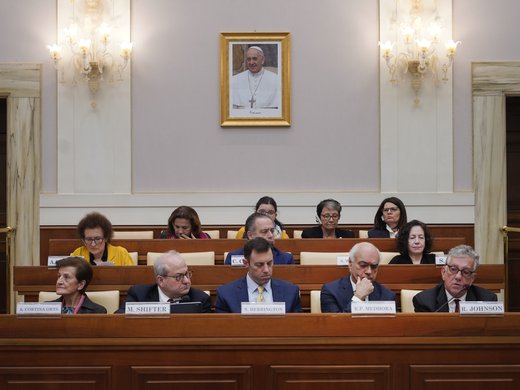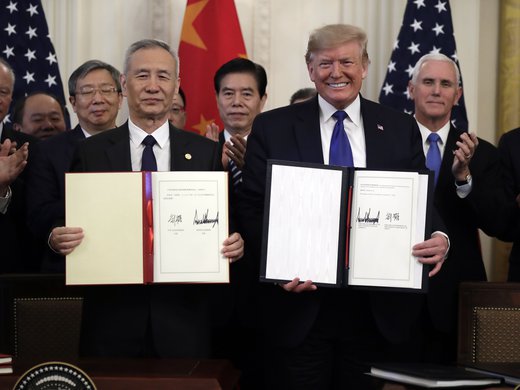Canada’s engagement with development assistance started in 1949, with its contribution to the United Nations Expanded Program of Technical Assistance, followed the next year by membership in the Colombo Plan, an endeavour inspired by discussions among ministers of Commonwealth countries to pursue the twin goals of reducing poverty and keeping communism at bay in South Asia. The main national institutional pillars of Canada’s aid program, the Canadian International Development Agency and the International Development Research Centre, were not created until 1968 and 1970, respectively.
Then as now, balances had to be struck, about the purpose, size, composition and nature of the foreign assistance enterprise. Despite changing fashions in debates about aid and development, the story of Canadian aid policy is one of continuity in terms of its overall goals and purpose.
Much to the dismay of the developmental purists, bilateral foreign assistance is inherently political and is not only about technocratically reducing defined measures of poverty. The multilateral institutions — UN agencies, the World Bank and the regional development banks — operate under the fig leaf of technocracy (though they, too, are political constructs) because of their treaty-based goals and governance, multi-country membership and specialized staff. But as with the Colombo Plan (to which Canada no longer belongs), in addition to the altruistic motive, the purpose of bilateral foreign assistance is a mixture of geopolitical and ideological goals, along with a grab bag of national imperatives such as trade and investment promotion, domestic political demographics and flag-waving.
This is also why the integration of CIDA into Foreign Affairs in 2013 was, and is, a non-event. Reports of CIDA’s independence prior to 2013 were greatly exaggerated as were reports of its impending death postmerger. Typical of the government of the day, the merger was announced with no consultation or open analysis, but its core logic was not wrong. No objective measure of need or likely impact of aid would include Afghanistan and the Ukraine in a list of priority countries. Yet both feature prominently among top 10 recipients of Canadian aid during the last decade. Cold war-era language may have been replaced by the lingo of nation-building, peace-building and institution-building, but the imperatives of containing extremism and promoting a liberal order through development are as relevant today as they were 60 years ago.
In addition to the altruistic motive, the purpose of bilateral foreign assistance is a mixture of geopolitical and ideological goals, along with a grab bag of national imperatives such as trade and investment promotion, domestic political demographics and flag-waving.
In the same year that CIDA was established, World Bank President Robert McNamara struck the Commission on International Development, chaired by former Canadian Prime Minister (and Nobel Peace Prize winner) Lester Pearson. Although the Pearson Report contained many thoughtful points, the one that resonated the most was the call for rich countries to commit to devoting 0.7 per cent of their GDP to foreign aid by 1980. Not surprisingly, Canada was an enthusiastic supporter of that target. In practice, the nearest Canada got to it was 0.55 per cent in 1975. Official statements then and since have prevaricated about the aspiration but no government has been forthright enough to disown it. Canada’s foreign aid budget currently stands at about $4.4 billion (0.28 per cent of GDP).
Clearly, the dollar amount of the aid budget is only one measure among many. The Center for Global Development in Washington publishes a Commitment to Development Index that assesses 27 rich countries’ performance on a series of topics (migration, trade, security, the environment, technology and finance) in addition to the raw aid budget. Here too, Canada ranks in the middle of the pack.
The main high-level choice aid programs, including Canada’s, face is what share of the aid budget to allocate to multilateral organizations. Historically, a quarter to one third of Canada’s aid budget has been distributed through the multilateral channel. For a period in the 1980s and 1990s, debt forgiveness for developing countries in distress featured as an important component of foreign aid. In the past ten years, this has averaged about $100 million annually, and has been zero the past two years. But three other important choices remain to be made.
First, how to “focus”, or concentrate aid? The past decade has seen a succession of discussions around “countries of focus” — the twenty or so countries where the bulk of Canadian aid is concentrated, and where that concentration is meant to yield a strategic or material developmental impact. In practice, given the small size of Canada’s aid budget, Canada is not the lead donor anywhere. In the real world, it is hard to attribute development success to the activities of any single player (and with success, it is guaranteed that many players will — correctly — rise to take the credit). In a world of spillover effects, concentrating on one country and not the neighbourhood makes no sense (imagine how this might work if during the Ebola outbreak only one or two of Guinea, Sierra Leone and Liberia were part of Canada’s priorities. Thankfully for the champions of country focus, none were).
Time has a funny way of making seemingly diligent choices look foolish. Suppose we were obsessed about countries of focus 20 years ago? No reasonable list would have included Afghanistan or South Sudan (which didn’t even exist then). Today, both are prominent members of focus. And if the list is malleable to suit events, how will the benefits from a prolonged concentration of attention and resources ever materialize?
Second, the natural tendency is for the immediate to dominate the important. In a world driven by crises, rolling headlines and instant communication, a shrinking aid budget has seen an over six-fold increase in its “humanitarian” component, rising from about $100 million in 2003 to over $650 million in 2014. Hard as it might seem, putting an upper limit on responses to catastrophes ringfences other, important, long-term parts of the aid budget such as support for (say) judicial reform or vaccine research.
Third, there is the delineation of science, innovation and the strengthening of long-term capacity as an important motive for Canadian foreign aid. IDRC, the “jewel” of Canada’s aid program in the words of William Winegard, who led a Parliamentary committee examining foreign aid in 1987, was expressly created for this purpose, and given specialized independent status as a crown corporation. IDRC has had a storied past, at the vanguard of the creation of the international agricultural research system, building China’s science policy apparatus, opening South Africa after the end of apartheid, transforming health outcomes in Africa and leading the charge to integrate information and communications technologies in developing country priorities — all while hovering around 4 per cent of Canada’s total aid budget. More recently, in addition to initiatives on math and physics education in Africa and health discovery science globally, Canada is the founding member (with Italy, Norway, Russia, the United Kingdom and the Bill & Melinda Gates Foundation) of the Advanced Market Commitments initiative, a fund to guarantee a profitable market for a technical advance that is pre-specified and unlikely to be produced without such an incentive. Based on the experience of developing pneumococcal vaccines, there is no reason why this method might not be applied to other vaccines and new sectors such as breakthrough technologies in clean energy and genomics. Might the share of the innovation basket of issues increase and indeed define the aid program in future?
In the discussion about foreign aid (there is a review of it currently underway in Canada, mostly led by Canadian organizations that implement aid projects), we sometimes forget three overarching points.
Despite it being a small share of the overall finance that flows into developing countries and that they mobilize internally, where it matters it really matters — by acting where others won’t, by catalyzing others to act, and by bringing ideas, contacts and best practice with it. For a relatively small aid program like Canada’s, impact might be better achieved by focussing on themes than on countries.
The development enterprise has been a success. Poverty and other forms of deprivation have fallen as never before, faster than at any time in history; “developing” countries like China, India and Brazil are also seen as regional or global powers, with aid programs of their own. The lessons learnt from successful developing countries and how conventional aid programs connect with those of emerging powers are two key issues in reengineering Canada’s aid program going forward.
Many of today’s main global challenges such as financial instability, governance of the Internet and climate change, while not purely development issues, have important implications for developing countries and will not be resolved without their participation. This speaks to the importance of integrating foreign aid matters in wider discussions about foreign relations and Canada’s place in the world.
Canada’s historic role as the credible, agile power with the smart money is as germane as ever. Designing an aid program for the 21st century rather than tinkering with givens would be entirely in keeping with who we are and what we stand for.
This article was first published by Policy Magazine.


